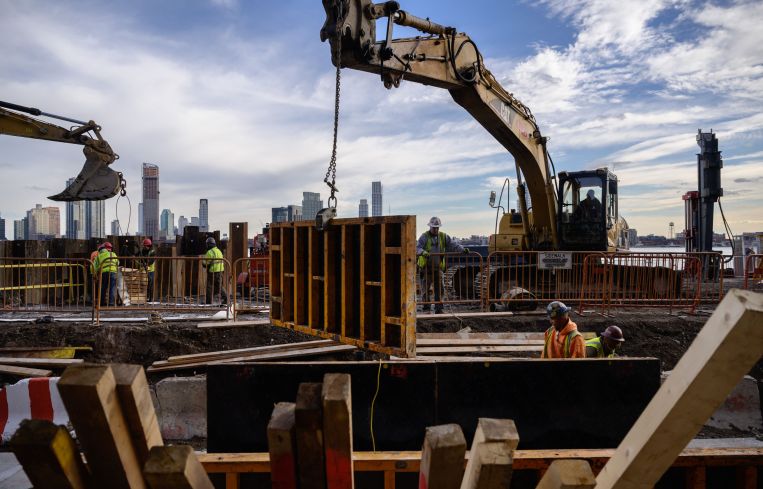How to Get More Buildings to Net Zero
By Mahesh Ramanujam April 5, 2024 2:20 pm
reprints
Anyone in commercial real estate will tell you that the industry is not without its significant challenges right now. High interest rates make closing deals more expensive and difficult. Continued post-pandemic hybrid (or even fully remote) work is reducing demand for office space. Rising maturity defaults, capex issues, tight profit margins and inflation present issues for the bottom line. On top of all of that, supply chain disruptions due to escalating global tensions have created uncertainty across the board.
Despite all of these challenges, I remain optimistic about the sector’s many new solutions and efforts to move the industry toward efficiency and sustainability.
Clean energy investment and innovation are booming as guidance for the Inflation Reduction Act continues to roll out, directing $400 billion in federal funding to clean energy. The Environmental Protection Agency expects building emissions to drop by 52 to 70 percent by 2035, thanks in large part to the IRA.

We’re also seeing progress at the local policy level. For instance, in New York City, commercial property owners are complying with energy efficiency laws faster than expected. There’s major progress from the private sector as well: Proptech continues to grow, businesses continue to commit to net zero, and awareness of and eagerness for ESG are increasing. We’re at a moment in history when resources for net zero are being assembled en masse.
But getting started on that net-zero journey can be confusing. As CEO of the Global Network for Zero, I’m working to make efficiency and net-zero progress achievable for the CRE sector. The following are basic things CRE leaders should consider when getting started.
The first step in any CRE organization’s net-zero journey — before a commitment — should be assessing emissions. What gets measured, gets managed. Our organization recommends leveraging the widely used Greenhouse Gas Protocol to comprehensively measure Scope 1, 2 and 3 emissions — a tool used by nine out of 10 Fortune 500 companies. This initial assessment lays the foundation for any effective net-zero plan.
After gathering initial measurements and data, the next step is selecting a certification program, or combining programs for maximum impact and a foolproof set of data. That said, keep in mind no single organization is going to successfully monopolize the net-zero certification space. I’d recommend a program that focuses on partnership and unifying standards so it’s less confusing for businesses to get started.
That brings me to my next recommendation: laying out an incremental approach. For context, the green building movement has traditionally focused on a top-down approach to certification for existing buildings, moving the top 10 percent of the market to higher levels of efficiency with the hope that the rest of the market would follow suit. That hasn’t been the case, with only a few hundred thousand or so green buildings in the last three decades, and the vast majority of those new construction.
When it comes to net zero, the numbers are even worse: only 0.023 percent of buildings globally are considered net zero, and most of them are big legacy showcase projects. To truly move the needle, we must provide a way for all CRE buildings to build incremental roadmaps to net zero — especially our existing buildings — with a bottom-up approach. It’s crucial that we also remove the rigidity that so often exists within traditional green building efforts.
Finally, I’d recommend CRE leaders include Scope 3 in their net-zero definitions, commitments and calculations. True net zero means the elimination of Scope 1, 2 and 3 emissions. Typically, certifications and net-zero programs focus only on the first two — direct and indirect emissions from within a building.
However, Scope 3 is the highest source of pollution, accounting for emissions throughout the value chain, including the embodied carbon that comes with a building’s construction. Scope 3 emissions have thus far been an outlier, albeit a critical one our industry must address. Luckily, there are numerous strategies available to address these value chain emissions, including sustainable procurement, promotion of a circular economy, and thorough data collection, including Environmental Product Declarations (EPDs), Life Cycle Assessments (LCAs), green procurement and circular economy principles, to name just a few.
We’re at a turning point for CRE to reduce emissions and improve efficiency on an unparalleled level, but we can’t achieve this without the public and private sectors opening doors for all organizations to decarbonize. For businesses wondering where to get started, remember: assess, embrace incrementalism, and include Scope 3 for success.
Mahesh Ramanujam is founder and CEO of the Global Network for Zero and former president of the U.S. Green Buildings Council.


